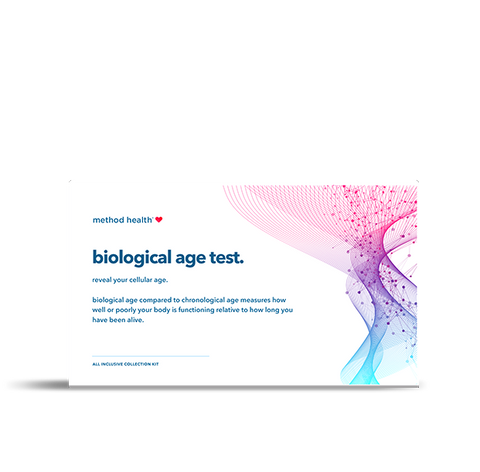
Biological Age Test
Are you aging faster than you would like due to telomere shortening?
Current research shows that telomere shortening contributes to cellular aging and susceptibility to metabolic disorders and chronic disease. According to scientific research, telomere shortening may contribute to aging and age-related conditions. Telomeres are segments of DNA found at the ends of chromosomes. They can be prematurely shortened when exposed to environmental chemicals, oxidation, inflammation, and stress. This leads to DNA damage and contributes to early cell death.
Lab visit required.*
HSA / FSA accepted
Title
$399.00

CLIA Certified Labs
Each lab we work with is CLIA-certified (Clinical Laboratory Improvement Amendments). This means they have to meet high standards to obtain both state and federal certifications and submit themselves to regular inspections.

Physician Reviewed Results
All tests are reviewed by a Method Health board-certified physician.

Secure Data
Method Health is HIPAA-compliant and takes your privacy very seriously. We use state-of-the-art, bank-grade encryption to ensure your data is stored securely, and under no circumstance do we ever sell your data.